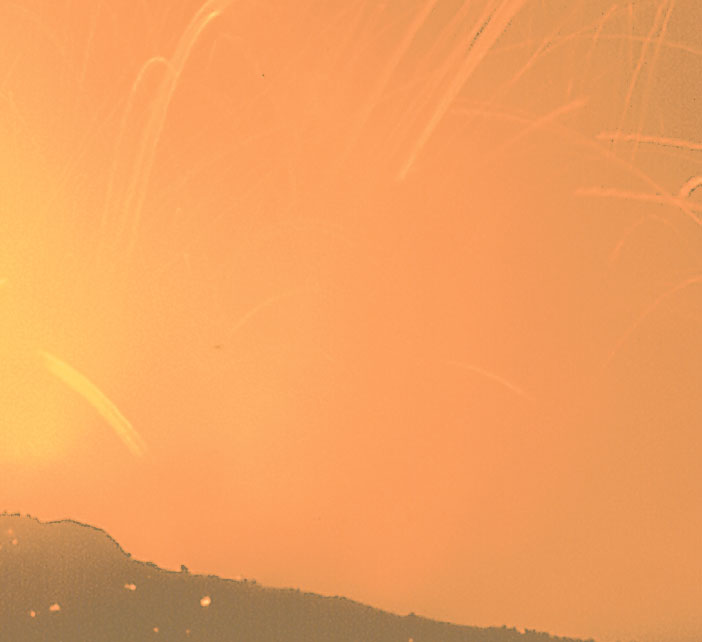Volcanoes National Park
by Jeanette Foster
Don’t leave the Big Island without seeing the “Greatest Show on Earth” the erupting Kilauea volcano, in the Hawaii Volcanoes National Park, which has been putting on a spectacular live show of fiery red rivers of molten lava since January 3, 1983.
The Hawaii Volcanoes National Park, the most visited natural site in the state, is an enchanted wonderland. Visitors are treated to a once-in-a-lifetime opportunity to see the results of 70 million years of fiery volcanoes, thousands of miles of ocean migration and ever-changing evolution on its 333,000 acres.
The “star” of Hawaii Volcanoes National Park is Kilauea, the world’s most active volcano. Lava from the 23-year eruption has covered 16,000 acres of lowland and rain forest. At last count, the hissing, spitting lava flow had destroyed 200-plus homes and businesses, wiped out Kaimu Black Sand Beach (once one of Hawaii’s most photographed beach- es) and Queen’s Bath. That’s not all: entire towns and subdivisions have been obliterated. 
According the early Hawaiian legends, there once was a time when spiritual beings walked the earth. During that time Pele, the volcano goddess, traveled across the Pacific looking for a home for her fire and her family. She settled in the still fuming crater of Halemaumau at the summit of Kilauea. So far Pele’s continuous eruption of more than 20 years has added more than 560 acres of new land to this already big island. The volume of erupted lava over the nearly two decades measures nearly two billion cubic yards, enough new rock to pave a two-lane highway 1.2 million miles long, circling the earth some 50 times.
The most recent eruption has come from Puu Oo, a 760-foot-high cinder-and-spatter cone. The lava flow has extended the Big Island’s shoreline seaward and added hun- dreds of acres of new land along the steep southern slopes (the so called “lava coastline”). Every once and awhile, the new land proves unstable, falls under its own weight and slides into the ocean.
If the lava is visible, don’t just see this spectacular event during the day, but return at night, about an hour before the sunset. At night you can see red rivers run down the side of the volcano, like roads mapping out the path of creation, before they ultimately disappear into the waiting waves of the Pacific. Plumes of smoke and crackling sounds emerge as Pele’s 2,500 degree fiery rivulets pour into the 78 degree waters of the ocean. You can see the lava still burn- ing in the water, until finally the vast Pacific douses the fire only to return Pele’s creation back to the land in the form of a new black sand beach.
Open: Hawaii Volcanoes National Park is open 24-hours a day, all year. The Kilauea Visitor Center is open daily 7:45am – 5 pm and the Jaggar Museum is open daily 8:30am – 5 pm.
Weather: The park is located at 4,000 feet, so be prepared for rain and temperature ranging from 30 degrees to 75 degrees. The weather down at the ocean can be hot, dry and windy. The Park Rangers recommend you bring: rain gear, light sweater or jacket, sturdy shoes, hats, water bottles, sun glasses, and high UV factor sunscreen. For island weather, call 961-5582.
Entry Fee: Pedestrians and bicyclists are $5; vehicles are $10 for seven days, or $25 for an annual tri-park pass that also includes access to Pu`uhonua o Honaunau National Historic Park in Kona, and Haleakala National Park on Maui. Camping and Lodging: Two campgrounds are available year round, call 985-6011 for information. The Volcano House, located in the park, is open all year, call 967-7321 for information. Additional lodging, inns and bed and breakfast accommodations are available in Volcano Village.
Contact: For the latest information on the volcano flow, access to the flow and general park information, call 985-6000 or www.nps.gov/havo.
